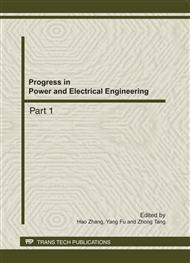p.1252
p.1257
p.1261
p.1265
p.1273
p.1278
p.1285
p.1289
p.1293
Reliability Prediction of Products Based on Generalized Closeness Degree
Abstract:
In practice, the getting product data types have ordinary real number, interval-valued in real number field, fuzzy set in real number field. In order to dispose these data simultaneously, a new generalized closeness degree is proposed in this paper. And then make it applied to reliability prediction. The new generalized closeness degree is getting through the weighted fusion with two of commonly used closeness degree. lattice close-degree Based on membership degree, and measure close-degree Based on area ratio. According calculating the characteristic factors’ close-degree between the awaiting predicting product and the case products, for every attribute value distributing a weight, prediction result is obtained by integrating the data.
Info:
Periodical:
Pages:
1273-1277
Citation:
Online since:
October 2011
Authors:
Price:
Сopyright:
© 2012 Trans Tech Publications Ltd. All Rights Reserved
Share:
Citation:


